Here’s a Japanese Plum Yew my mother picked up, and then found that it didn’t suit her balcony very well. So she offered it to me as grist for the bonsai mill.
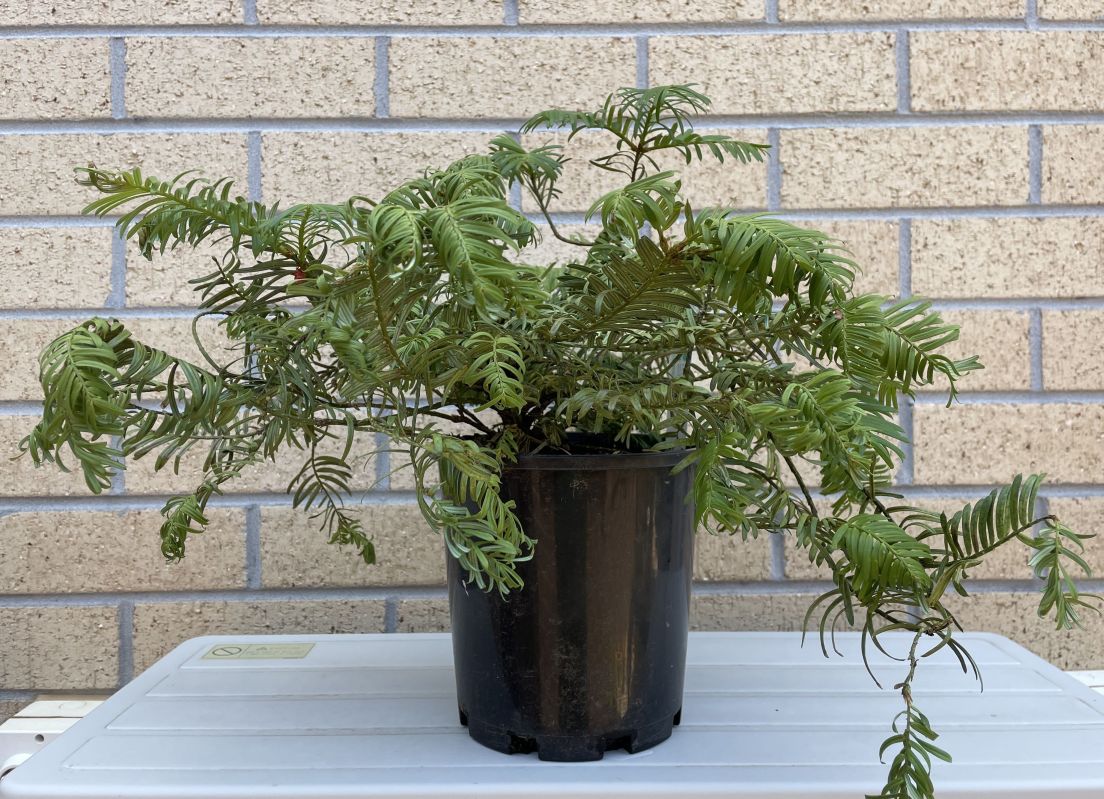
This plant is also known as a Creeping Plum Yew, which I find to be a better name because a) it is a low lying spreading plant and b) I tend to suspect these place names have some racist history (c.f. Dutch courage). I got better matching image search results with “Creeping Plum Yew” than “Japanese Plum Yew”. Something to keep in mind. But I’m not arguing with the Latin name.
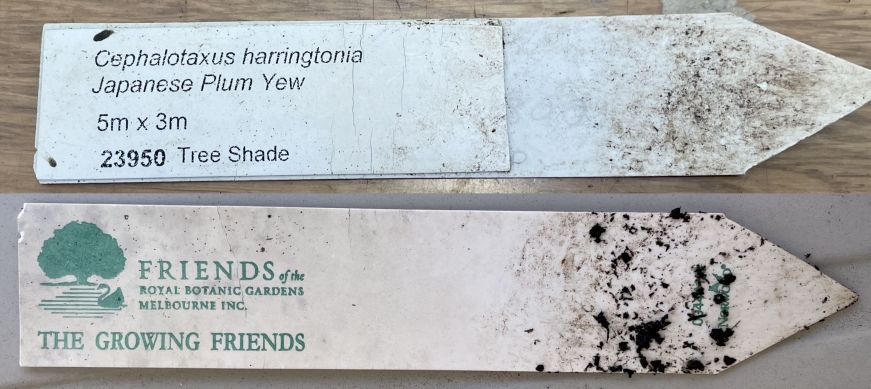
Also, if I’m lucky, this will have flowers. Maybe. Eventually.
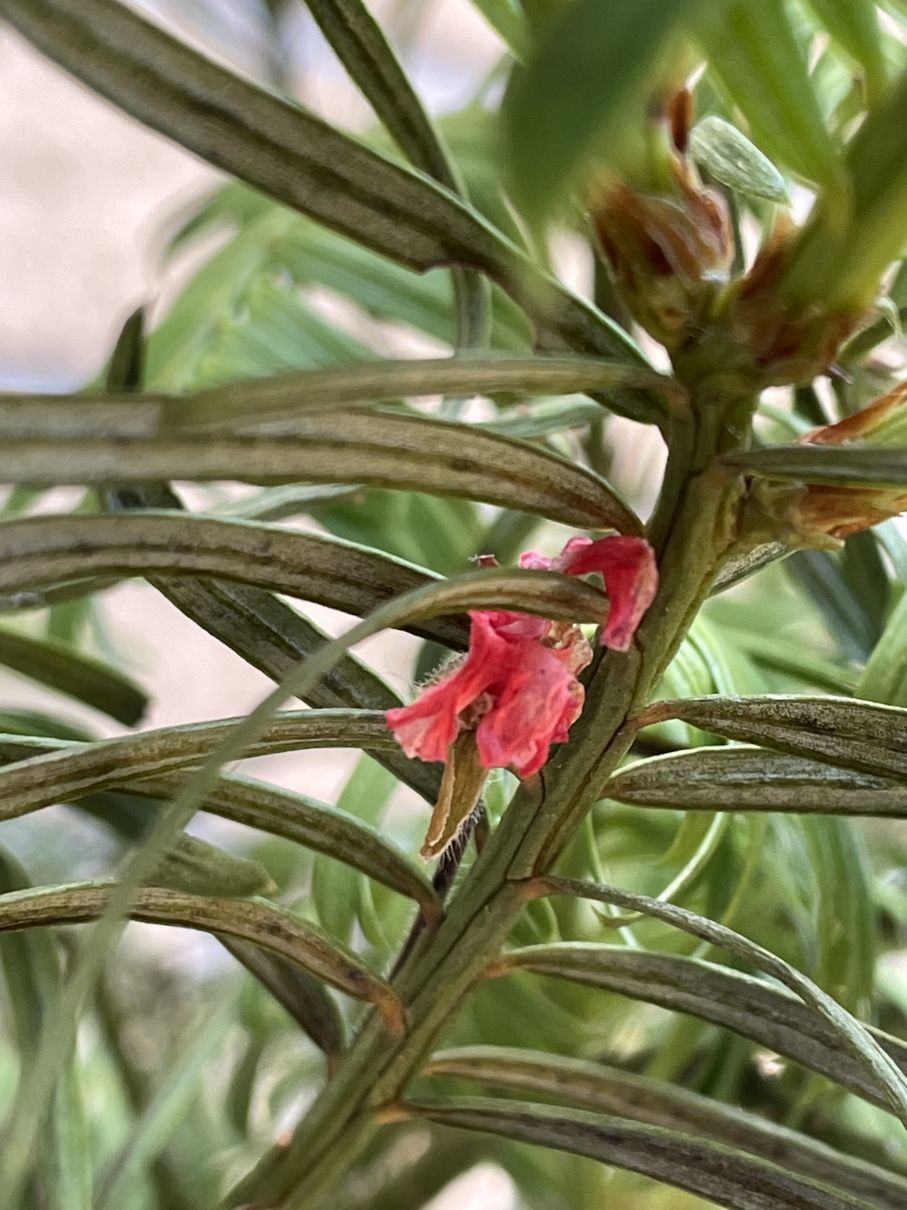
Taking a preliminary look at the tree… boy, is it crowded.
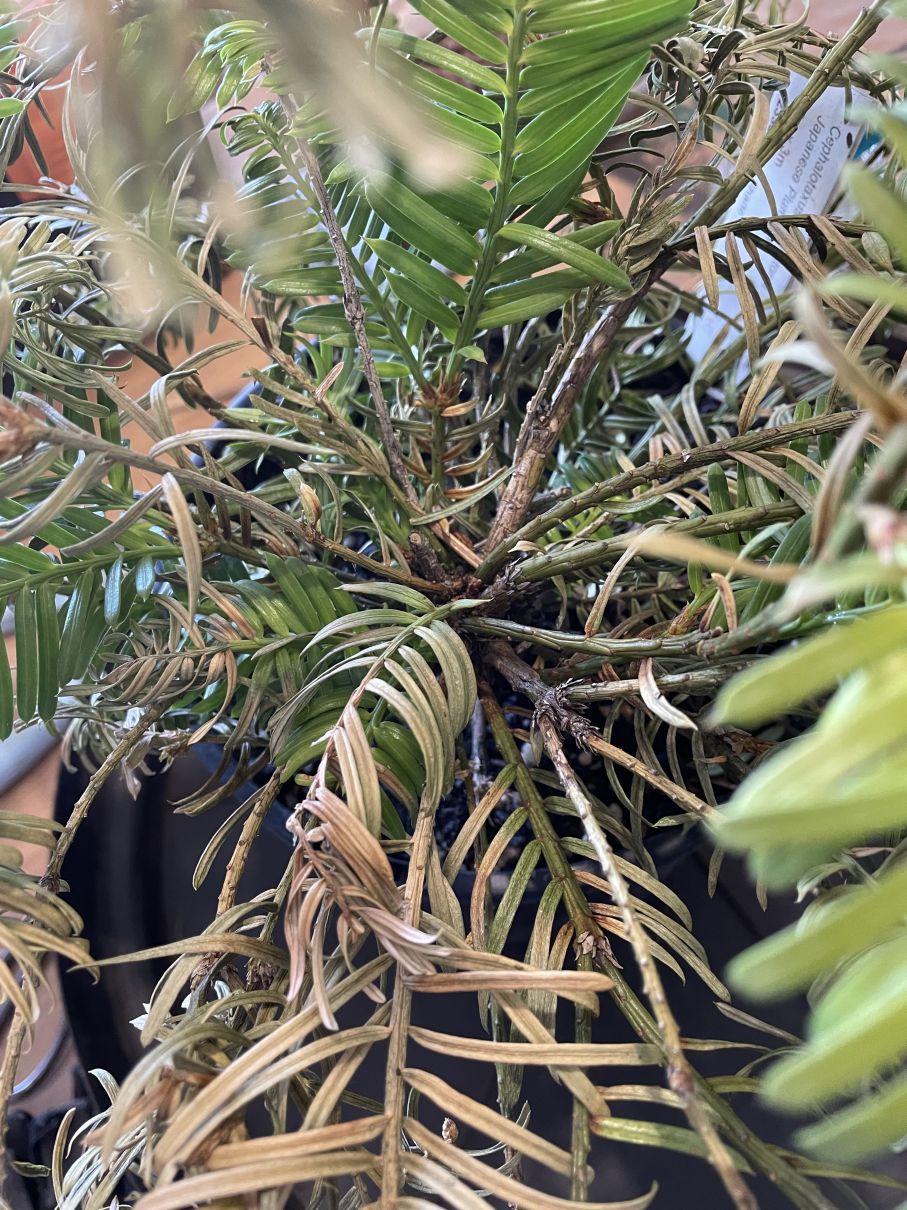
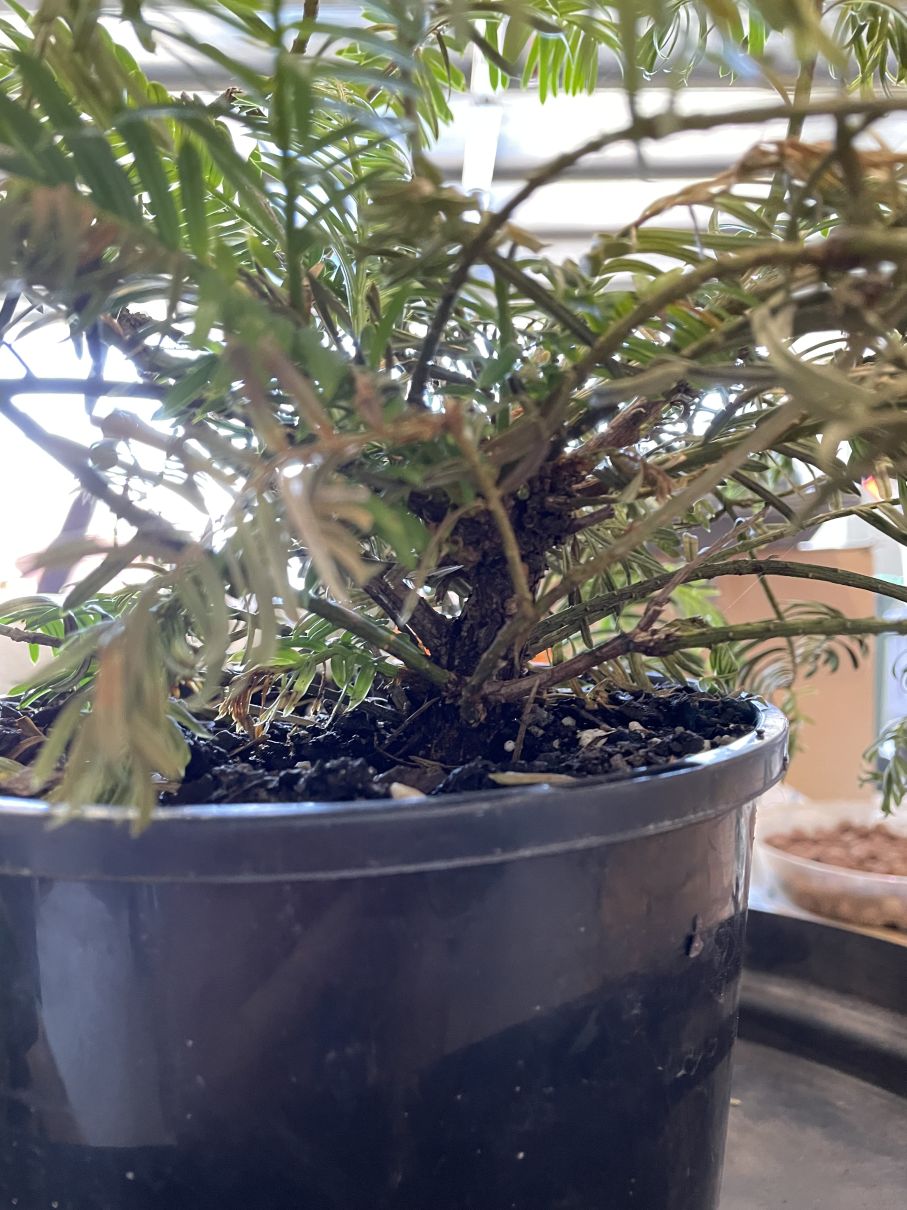
First pass is to remove the dried and dying branches. I paused after that to see what’s under the soil.
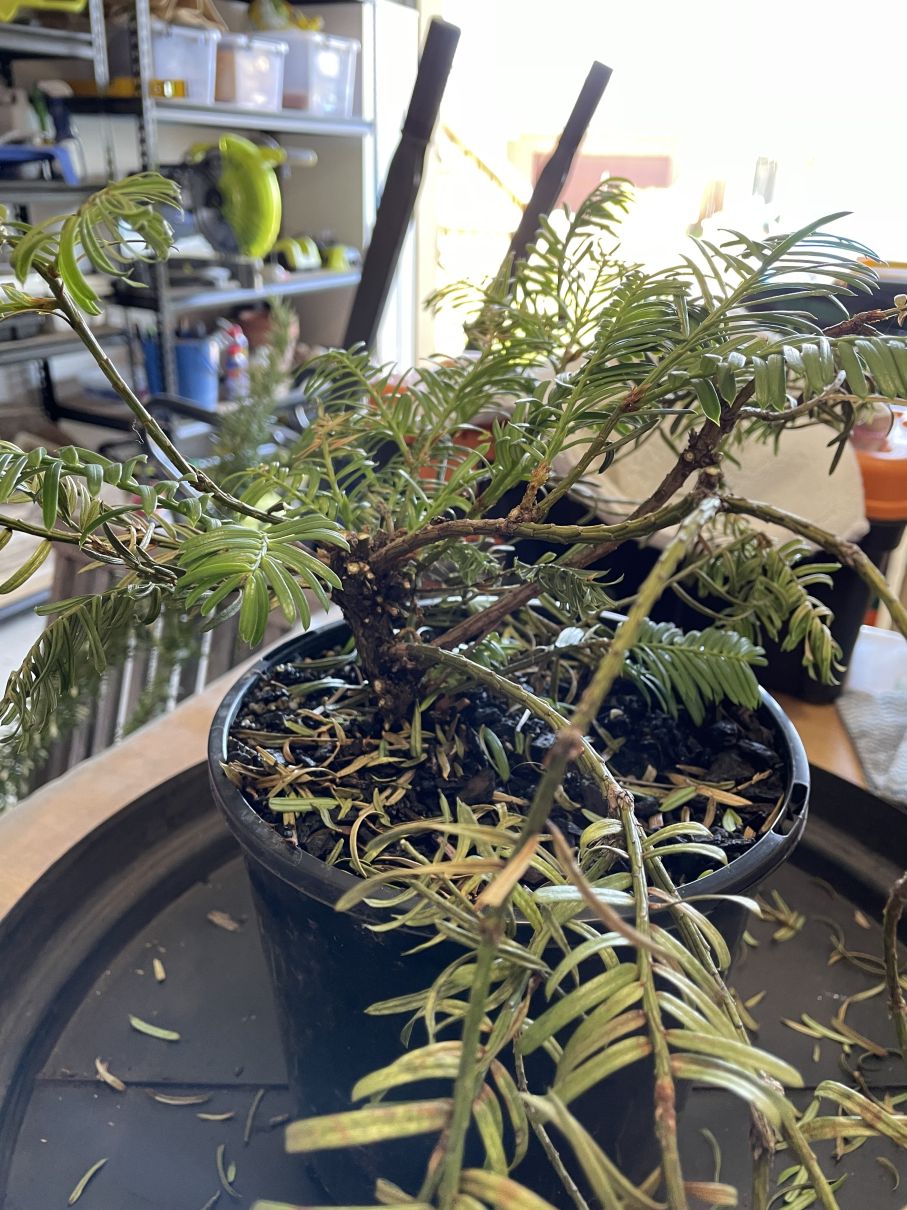
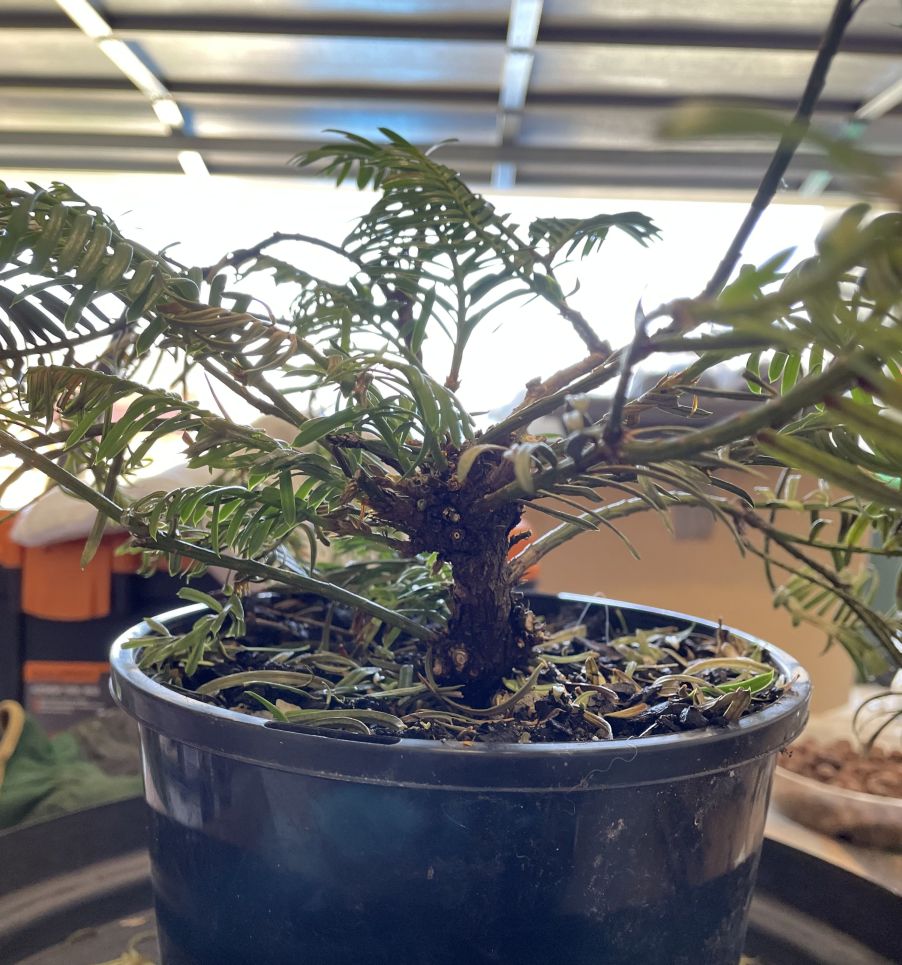
It turns out there was a surprising rich set of roots, although they were pretty root-bound. So an hour or so of careful cleaning later…
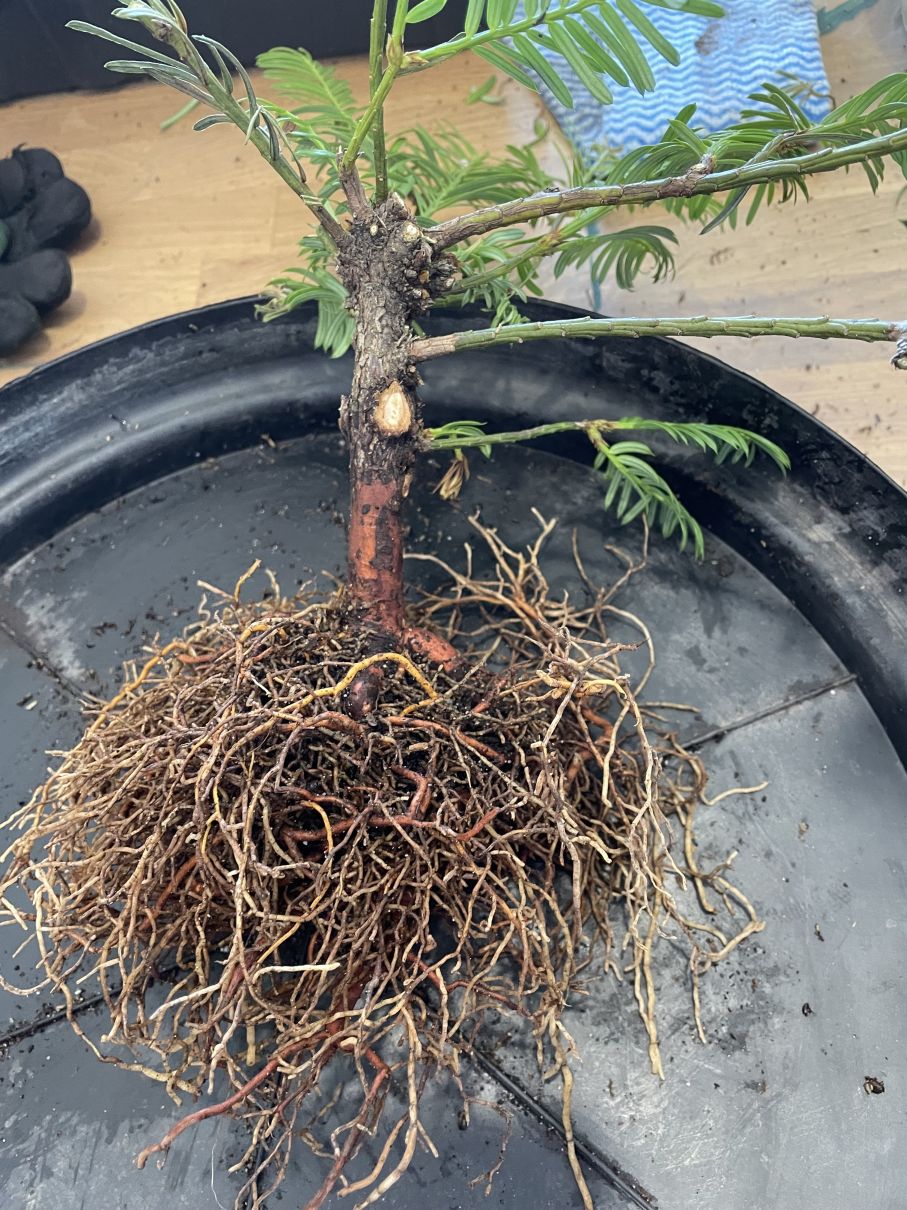
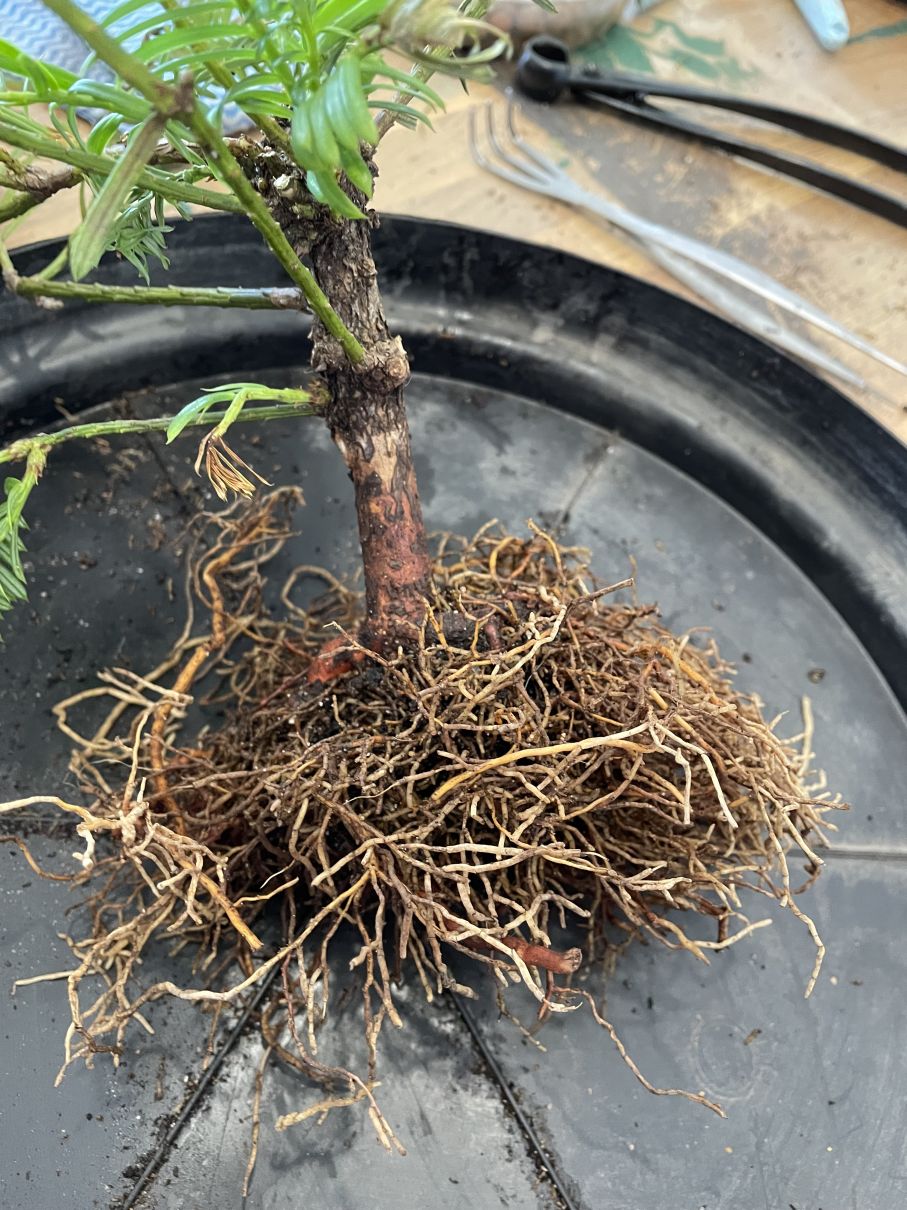
Looking for a suitable pot. Due to the thickness of the trunk, I think this is going to be a fairly small pot. Which in turn means that I’ll be looking to reduce the breadth of the canopy to match. Here’s where we settled.
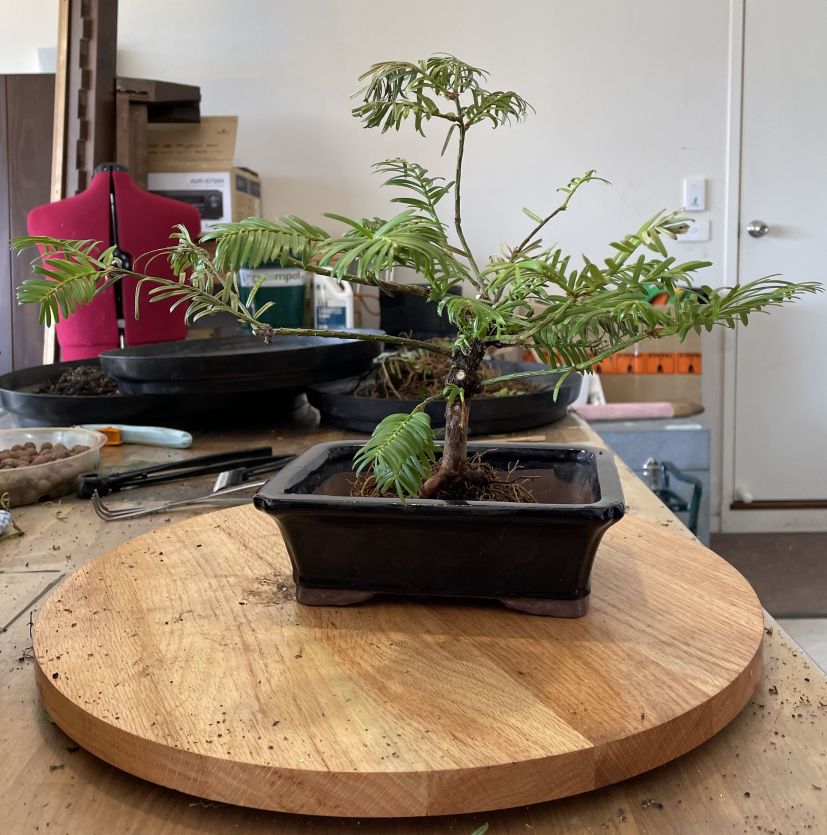
Potting was pretty standard.
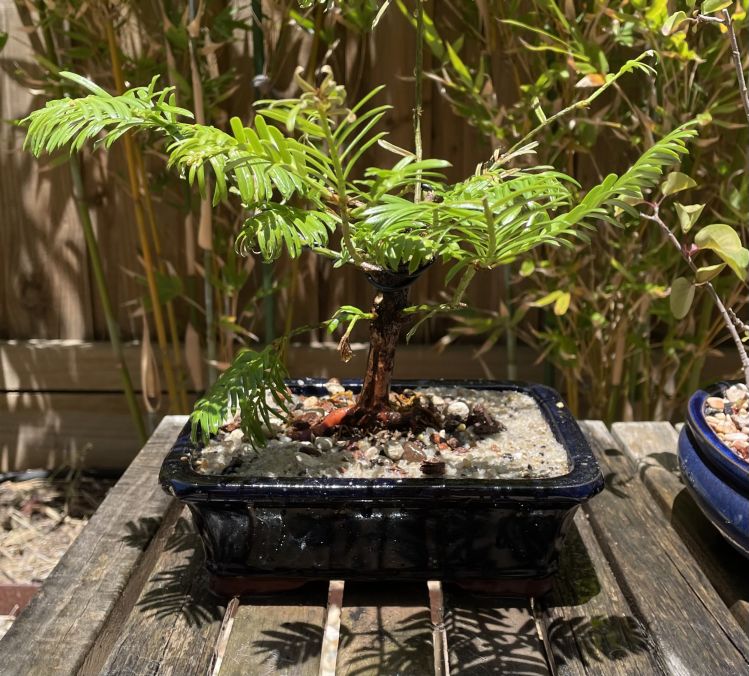
I’m thinking that this tree might do a credible impersonation of a palm tree:
- The trunk is fairly straight and smooth
- The top of the trunk bulges and has a bunch of stumps from the old branches, which looks like the roughage at the top of a palm tree
- When the branches are short they the style of palm fronds (which they lose as they get leggier)
We’ll see how it goes.
A postscript: after potting (i.e. when it was too late) I looked for some advice on this tree as a bonsai. I found this comment :
Takes pruning and wiring well. Possible deadwood features. Root system thrives in a cool, moist substrate high in organic matter. The natural form at maturity is low spreading, vase shaped and flat topped.
Bella Bonsai Nursery
Which is good news except for the part about organic matter. There’s some bark and charcoal in my soil mix, which isn’t exactly ‘high’.